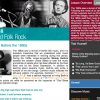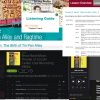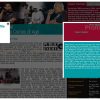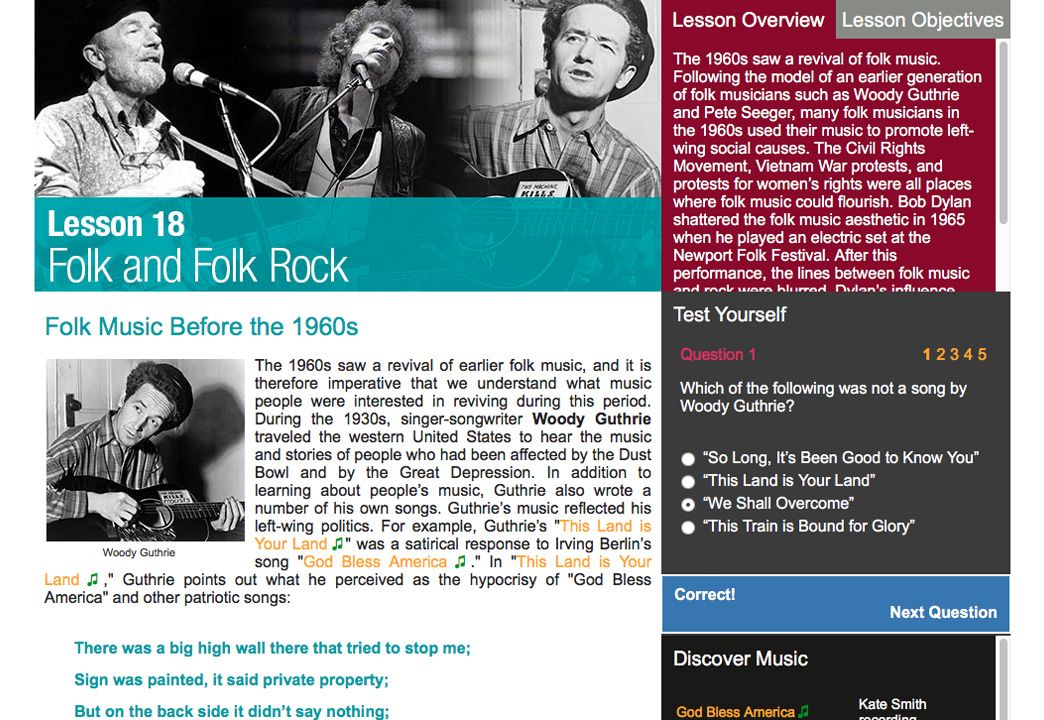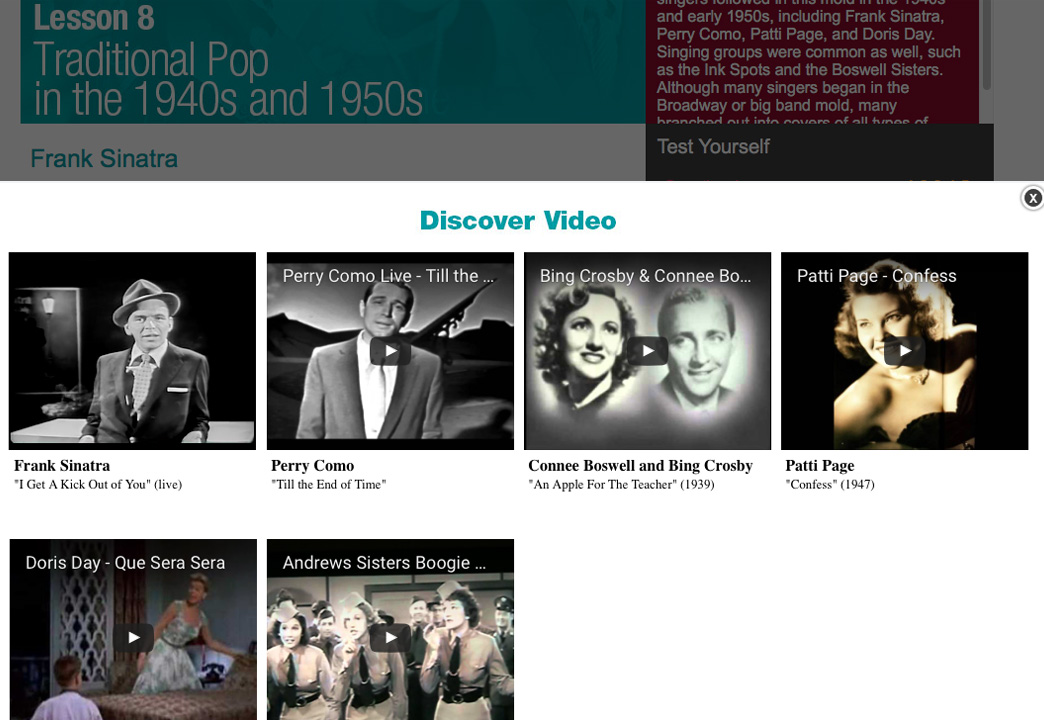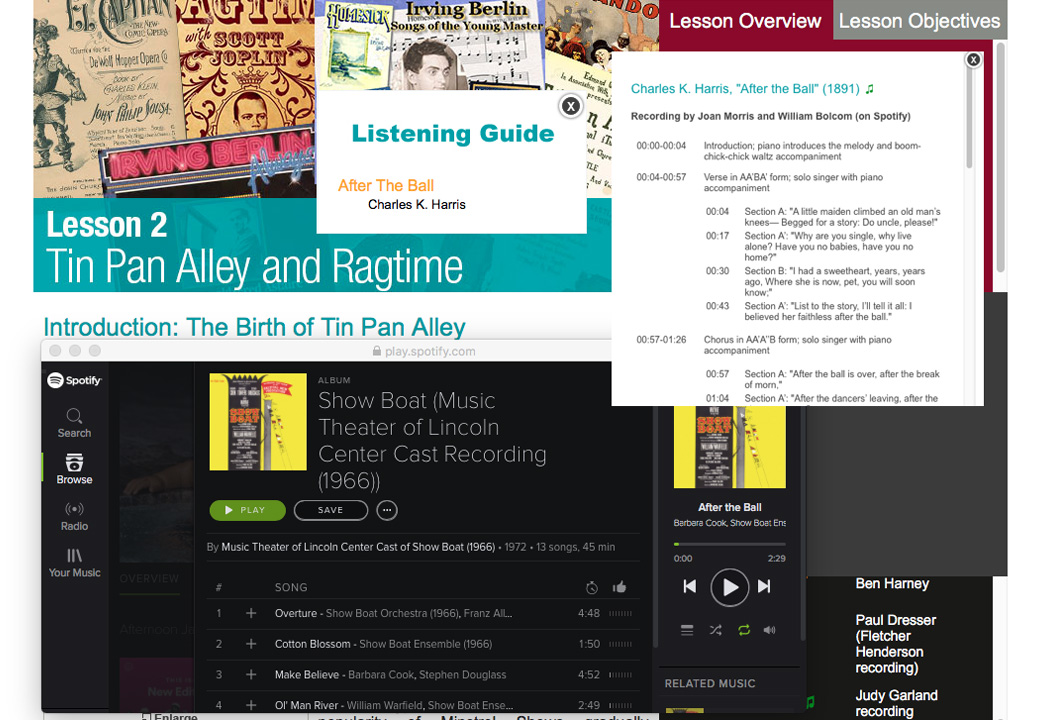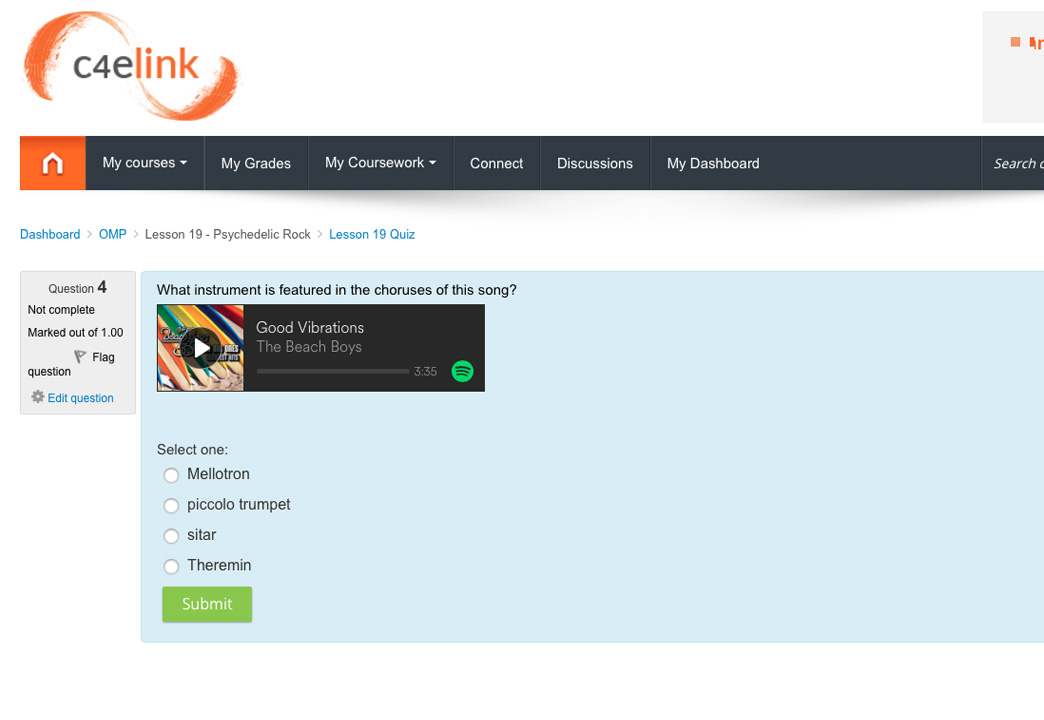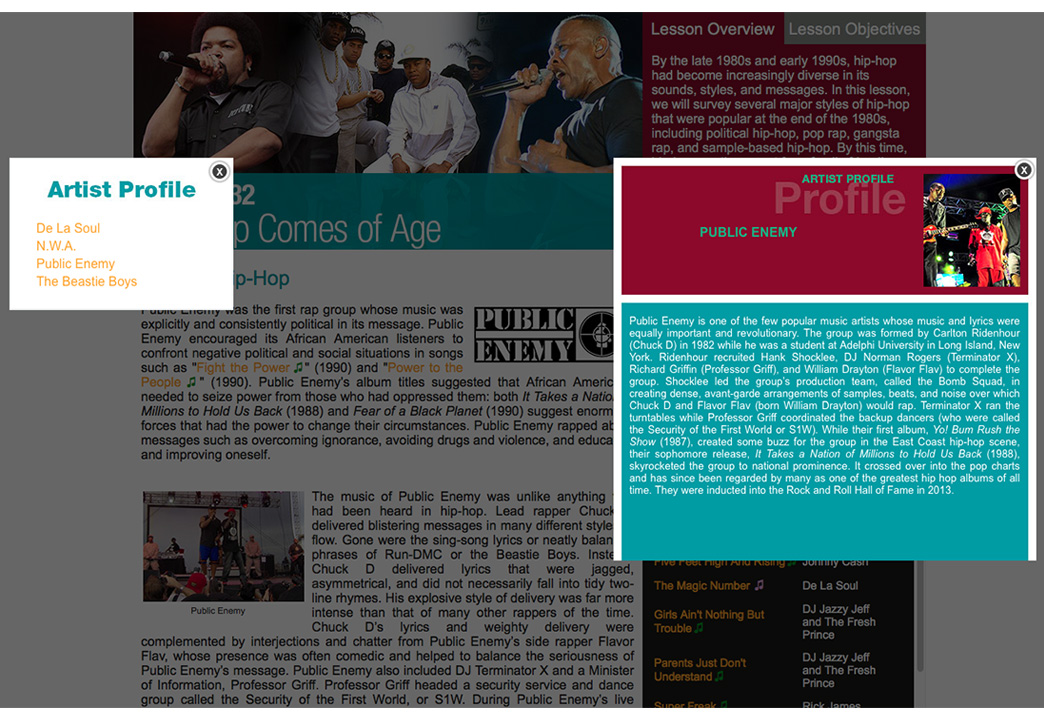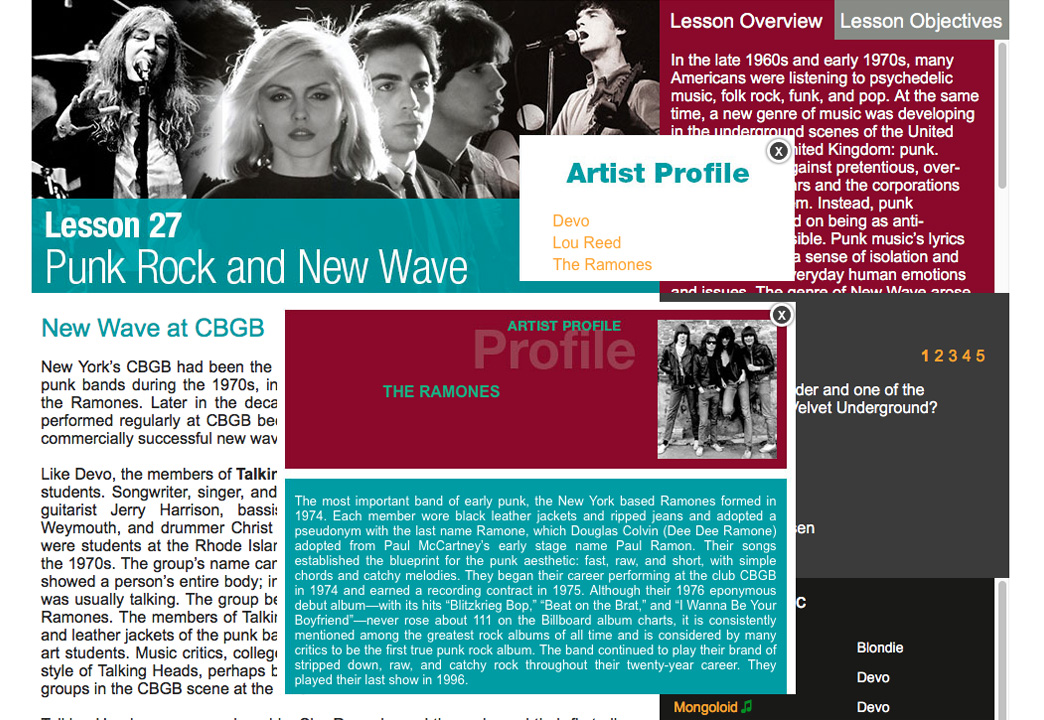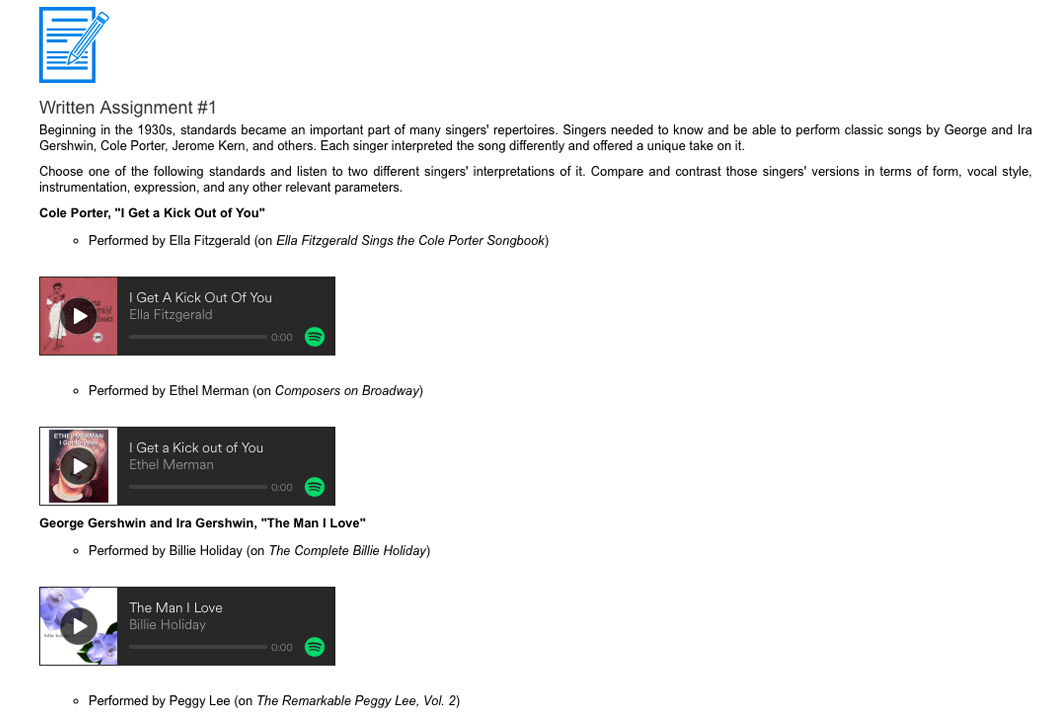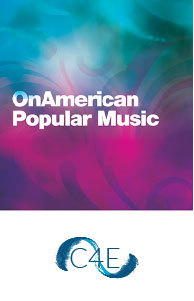OnAmerican Popular Music explores the rich tapestry of popular music in the United States – from its origins to today. Based on Dr. Simon Anderson’s title, OnAmerican Popular Music focuses on listening and references over 600 pieces of streaming music linked directly from the text.
Click here for an interactive preview!
This product contains an Access Code Only
Music – Music is the focus of this title, and there are over 600 pieces from early minstrelsy to today. Click here to see a partial list.
Discover Video – Videos in every chapter reinforce understanding and engagement while exposing students to original artists in historical context. Our video applet keeps students on the page, in the course, and on task.
Listening Guides – Listening guides help students explore the inner workings of a piece of music. Our listening guides examine structure, text, texture, instrumentation, style and more.
Test / Quizzes / Assignments / Discussions – Our title contains a comprehensive set of auto-graded quizzes and tests. There are also ready-to-use written assignments and discussion forum topics. All testing is fully integrated and flows naturally from the text.
Customization – Instructors can add, remove, and edit content, assessment material, and assignments at will or leave it as is for a great out of the box experience.
Test Yourself – Instant feedback to students
Artist Profiles – Information on performers, writers, and other important artists
Flash Cards – Interactive self study tool
Self Quizzes – Drag and drop key words and concepts
Comprehensive Instructor Guide – For the busy or first time instructor

